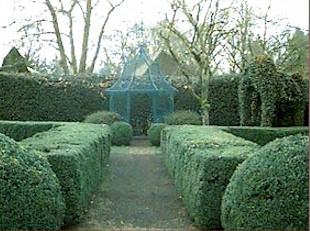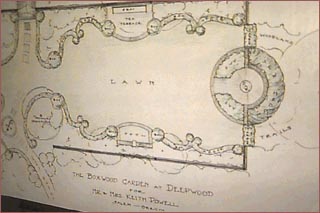|
Botanical Discoveries:
Mountain Huckleberry (Vaccinium membranaceum)
Fort Clatsop, Oregon, February 7, 1806
While the
Mountain Huckleberry
(Vaccinium membranaceum) can be found from
Alaska to California and east to the Great Lakes, the Evergreen Huck is
native only to the northwestern states. However, both will grow well all
across North America in USDA zones 6-9 or even 10. Easy to care for,
beautiful to behold and a delight to the palate, we send our thanks to
Captain Lewis for recognizing the huckleberry as worthy of note.
|

Fall color |
|
|
The Expedition's Journey
Continues:
Many members of the expedition were ill during the winter of 1805-1806 and
not all of the
visitors from the several tribes of native peoples were accustomed
to the ways of these strange pioneers. Of the Chinooks who came to the
fort on 20 February, Captain Lewis wrote:
Since their departure we have discovered
that they have stole an ax.
And about the men who were ill:
Gibson is on the recovery fast; Bratton has
an obstinate cough and pain in his back and still appears to be getting
weaker. McNeal from his inattention to his disorder has become worse.
More of Meriwether Lewis' thoughts on the Chinook visit:
... Chinooks ... at all events we
determined always to be on our guard as much as the nature of our
situation will permit us, and never place ourselves at the mercy of any
savages. we well know, that the treachery of the aborigenes of America
and the too great confidence of our countrymen in their sincerity and
friendship, has caused the destruction of many hundreds of us. so long
have our men been accustomed to a friendly intercourse with the natives,
that we find it difficult to impress on their minds the necessity of
always being on their guard with respect to them. this confidence on our
part, we know to be the effect of a series of uninterrupted friendly
intercourse, but the well known treachery of the natives by no means
entitle them to such confidence, and we must check it's growth in our
own minds, as well as those of our men, by recollecting ourselves, and
repeating to our men that our preservation depends on never loosing
sight of this trait in their character, and being always prepared to
meet it in whatever shape it may present itself.
We can but wonder what the Chinook people felt about these men of pale
countenance. Not nearly as much has been written from that viewpoint as
remains of the celebrated expedition.
Go to our Corps of Discovery Expedition
Bicentennial Index page
to see all links in this series. Or click
here
to go directly to the next installment of our
journey.
|
|
 |
|
Bringing history alive:
Using the plants
Restoration: Native plants interwoven with hybrids form the
basis of Salem, Oregon, Bush Park and adjoining Deepwood
Estate Museum
www.historicdeepwoodestate.org/
Landscape
architects Elizabeth Lord and Edith Schryver were commissioned by Deepwood
owner Alice
Brown to create the formal gardens at Deepwood Estate. Lord and Schryver
were the first formally trained women landscape architects in the
northwest. Pictured at right, top, is the 1905 Lewis & Clark Gazebo
acquired by Mrs. Brown and sited at Deepwood in 1949. Below is an
architectural drawing of the grounds at Deepwood.
|
 |
| The gardens were developed over the
next decade and flourished under the loving care of Alice
until 1968 when health considerations required her move from
Deepwood. The gardens were brought into the public domain in
the early 1970ís and are part of the Salem parks system.
The gardens contain boxwood
gardens, an English tea house garden, covered arches and
gazebos, ornamental gates and fences as well at The Rita
Steiner Nature Trail weaving its way through the western
border of the property towards Bush
Park. Native shrubs, trees and perennials flourish in
these gardens. There are hundreds of
Fawn Lilies (Erythronium
oreganum) celebrated in the annual Erythronium Native Plant
Festival and Sale (see the calendar on their website at the
above link). |
 |
As part of
raising the level of public awareness concerning the legacy
of the two landscape architects, the Lord & Schryver
Conservancy began preservation work in the gardens at
Deepwood in 2003.
Deepwood
is the most significant example of landscape architects Elizabeth Lord and
Edith Schryver's northwest work. It is their only garden design that is
open to the public. Intriguing features at Deepwood include a scroll
garden with a hidden signature, an ivy tunnel and a pastel tea garden.
There are three other superb examples of their designs in the area, but
they are associated with private residences. |
|